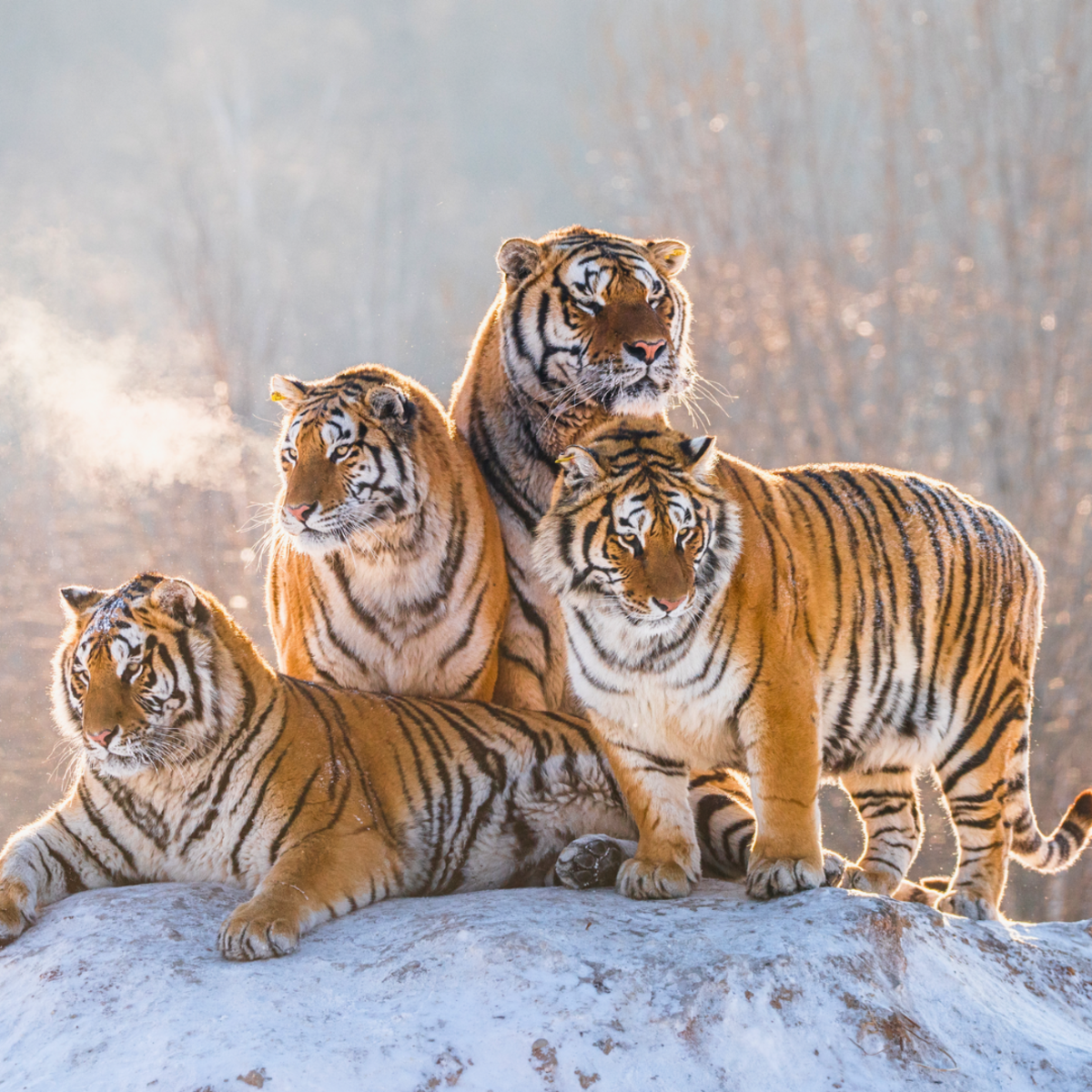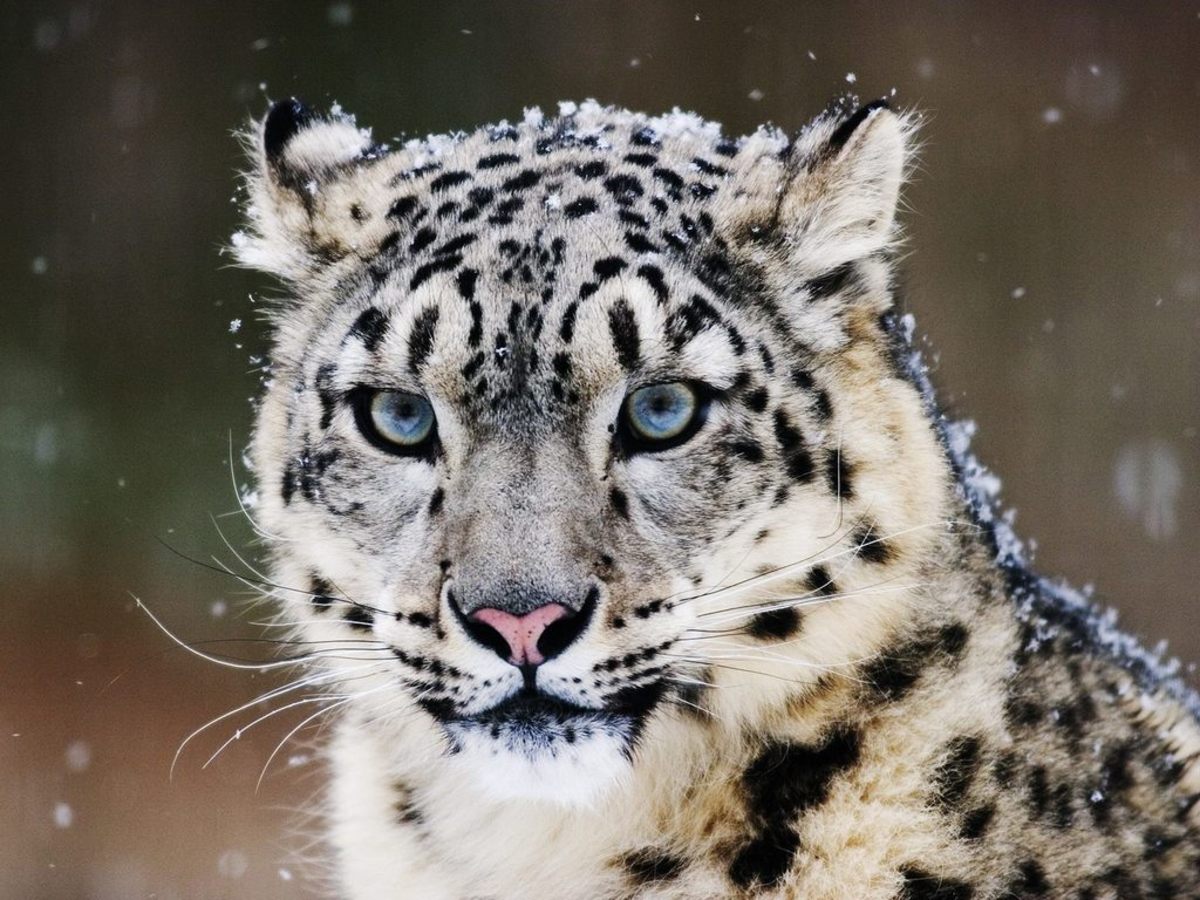- HubPages»
- Education and Science»
- Life Sciences»
- Endangered Species
Save the Tiger!
Test your knowledge on Tigers!
view quiz statisticsThe Royal Bengal Tiger
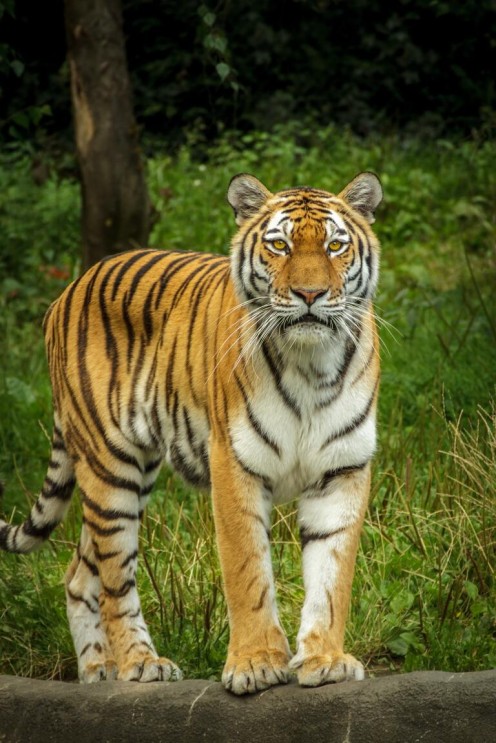
Tigers and their dwindling numbers!
TIGER- The name itself sounds synonymous with dread, fear, awe and respect! One of nature's magnificence, this cat species can be dubbed as the ultimate survivor of times.
Being an apex predator, Tigers in the 19th century inhabited wide parts of central & west Asia, Siberia, China, the Indian sub-continent and South-east Asia. But over the last century, the tiger population has seen a dramatic fall. Since the early 20th century, tigers have practically disappeared from west & central Asia, major parts of China, Java, and Sumatra. Listed as 'Endangered' on the IUCN Red list of threatened species, tigers have lost their range to the tune of 53%-68% since the early 1990's. According to WWF statistics, the tiger population has reduced by a whooping 95% over the past century.
It is the general callousness, superstition, habitat destruction, and fragmentation due to deforestation, that have set forth the dangerous motion of depletion in the tiger population. Be it poaching for profit or mindless extermination for medicinal values, these poor beasts have been at the mercy of humans for quite sometime now.
Massive deforestation have reduced the natural prey base of tigers as a result of which, venturing into villages to feed on cattle have increased the human-wildlife conflicts.
A mere 5500 Tigers are left in the wild today of which India accounts for 70%.
Poaching is responsible for around 22% of Tiger deaths

Tigers are NOT natural man-eaters!
Tigers are predominantly solitary creatures with the exception of the mating season and the duration during which the tigress devotedly takes care of her young. Tigers in India predominantly hunt deers, boars, the Indian bison or 'Gaur', small mammals and birds.
Tigers do not hunt Humans!
India has been associated with many instances of man-eating tigers and leopards leading to a poignant theory of they being natural human killers. Tigers detest human presence and will unceremoniously move away once they sense them. Humans do not fall under the natural prey base of tigers. Hence, to judge them as natural human killers would be immature and uninformed.
A tiger turns into a potential man-eater only due to one of the following reasons:
- When a tiger has been severely wounded (again due to the inexperience of some over-zealous hunter or due to a territorial dispute with one of its own). The tiger's jaws and forelegs are formidable parts when it comes to hunting. Any injury to them renders the tiger ineffective to hunt their natural prey. As a result of which they turn to humans who are comparably an easy prey!
- When a tiger has been injured in a fight with a porcupine: Surprisingly tigers, being the intelligent animals they are, have a unique fascination when it comes to porcupines. Porcupines have quills or pointed thorns all across their body and can use them as a formidable weapon against any enemy when attacked. Hence, more often than not, the tiger ends up being showered with quills on its vulnerable parts due to which it becomes inadept at hunting its natural prey.
The cubs of any man-eating tiger do not become natural man-eaters. One word of caution though: Tigers lose complete fear of humans once they are established man-eaters. As a result, they hunt both during the day and night. Whereas Leopards, no matter how dreaded a man-eater they become, retain their inherent fear of humans , thus hunting only at night.
A wounded Tiger
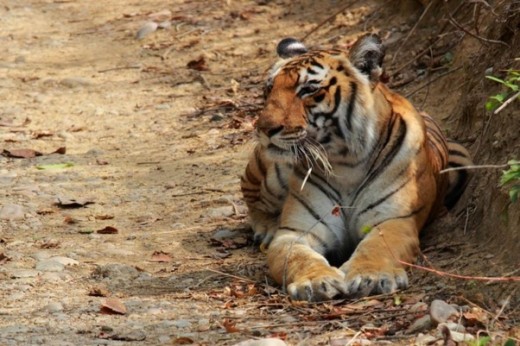
Creating conservational awareness and how?
One of the pivotal point in sustained conservation efforts either by the government or the NGO's (Non-Profit organisations) would be to emphasise and create awareness among the populace that live along the fringes or inside the territory of the Tigers.
It would help to keep in mind that most of the human-wildlife conflict that lead to fatal encounters and/or livestock losses are in tandem with those living along the fringes of the jungles. Hence, creating awareness amongst these people is of paramount importance as a healthy tiger population is quintessential in maintaining a healthy and thriving jungle ecosystem.
Organising awareness campaigns in schools, colleges and for those residing in cities can help bring about a constructive shift in the mindset which in-turn can bring about coordinated effort in long term conservation programs.
Though anti-poaching camps have been established, the need would be to increase them substantially in all the tiger reserves. Strict laws need to be in place and anyone found guilty of poaching activities need to be sentenced with severe punishment.
Responsible ecotourism in dedicated tiger reserves is an on-going effort and such efforts should be continued with emphasis on sustainability and affordability.
Human-wildlife conflict
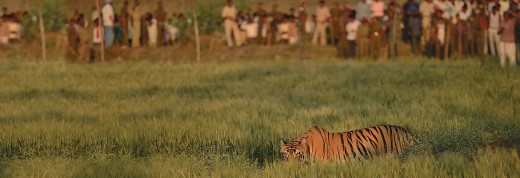
Top Tiger Reserves in India as per Tiger Population in 2023
Name
| State
| Tiger Population (2023)
| Total Area (Sq.Km)
|
|---|---|---|---|
Corbett National Park
| Uttarakhand
| 260
| 1288.31
|
Bandipur National Park
| Karnataka
| 150
| 1456.3
|
Nagarhole Tiger Reserve
| Karnataka
| 141
| 1205.76
|
Dudhwa National Park
| Uttar Pradesh
| 135
| 2201.77
|
Bandhavgarh National Park
| Madhya Pradesh
| 135
| 1536.93
|
Mudumalai National Park
| Tamilnadu
| 114
| 688.59
|
Kanha National Park
| Madhya Pradesh
| 105
| 2051.79
|
Kaziranga National Park
| Assam
| 104
| 1173.58
|
Sunderbans
| West Bengal
| 100
| 2584.89
|
Tadoba-Andhari Tiger Reserve
| Maharshtra
| 97
| 1727.59
|
Sathyamangalam Tiger Reserve
| Tamil Nadu
| 85
| 1408.40
|
Pench Tiger Reserve
| Madhya Pradesh
| 77
| 1179.63
|
Apart from the tiger reserves listed in the table there are 43 other tiger reserves located in various states of India. To view the complete list, click the bel
There are 55 Tiger reserves in India spanning the length and breadth of the country. This increase in tiger reserves have seen a promising swell in the tiger population which is extremely heartening!
— smA Tigress with her cubs
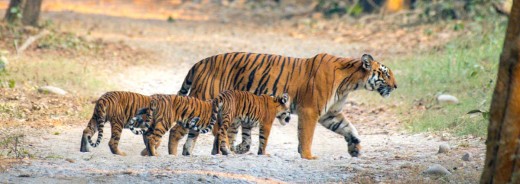
An animation video on Tiger conservation!
Project Tiger- India's effort towards Tiger conservation
The Govt of India's initiative towards tiger conservation
- NTCA - TIGERNET
- National Tiger Conservation Authority
To gauge the success of conservation efforts as well as to have a finger on the pulse of tiger populations and their ecosystems.
Poll Time!
Which animal do you find the most graceful?
A documentary about Tigers in India!
A must buy!
It's been 15 years since this article was published and India has made a remarkable comeback in terms of her Tiger population since then. From 1706 tigers in 2010, the tiger population has increased to 3433 in 2023. Though the result is encouraging, continuous and sustained efforts need to be an on-going process!
— smYour feedback is important!
This content is accurate and true to the best of the author’s knowledge and is not meant to substitute for formal and individualized advice from a qualified professional.
© 2009 Souvik Mukherjee






